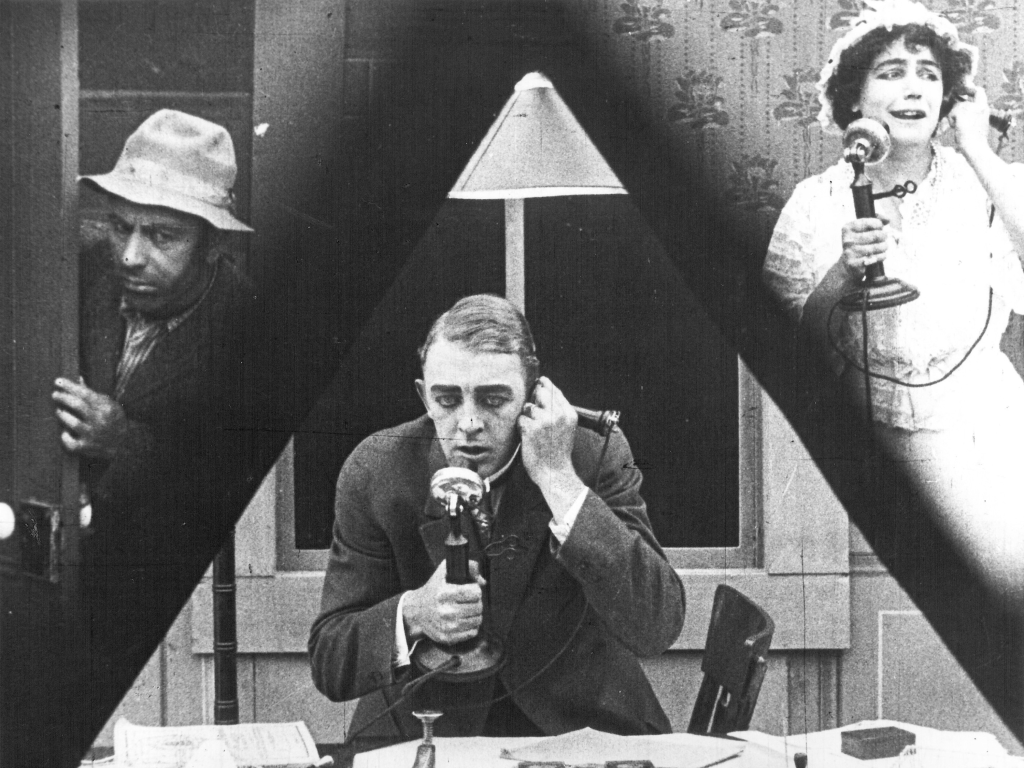
#659) Suspense (1913)
OR “The Calls Are Coming From Inside the Film!”
Directed by Phillips Smalley and Lois Weber
Written by Weber. Based on the play “Au Telephone” by André de Lorde.
Class of 2020
The Plot: The sudden resignation of a servant (Actor Unknown) leaves a Wife (Lois Weber) home alone with her newborn baby. Suddenly, a Tramp (Sam Kaufman) arrives, breaking into the house and cutting off the phoneline as the Wife calls her Husband (Valentine Paul). Sensing danger, the Husband steals someone’s car and speeds towards home, with the car’s owner (Douglas Gerrard) and the police in hot pursuit. As you can tell, this premise is ripe with…an uncertain tension.
Why It Matters: The NFR gives a detailed plot synopsis and recognizes Lois Weber as part of the “women directors [that] played a prominent role in the development of film as an art form.” Unusually for an NFR write-up, they include a link to an Amazon listing of a book they reference, in this case Charlie Keil’s book on early American film. Is the NFR an influencer?
But Does It Really?: Sure. “Suspense” has a lot going for it as long as you’re a film buff. On its own “Suspense” is a bit of a mess, but knowing that Lois Weber is behind the camera (as well as in front of it) makes it all the more interesting. Known for her moral melodramas of the late 1910s, it’s fun to watch Lois Weber making a film that favors sensationalism over the social commentary that would become her wheelhouse. I can give “Suspense” a pass as a stepping stone movie for Lois Weber on her way to bigger and better.
Everybody Gets One: We’ve covered Lois Weber and her move to Hollywood in 1912 with her husband Phillips Smalley in previous posts. What I’ll say here is that part of the reason for the move was Carl Laemmle’s initiative for more female directors and producers within Universal, and Lois started directing as soon as she arrived. Fun Fact: In fall 1913, Weber was named the first mayor of Universal City! Sure it’s an honorary title, but it looks good on a resume.
Wow, That’s Dated: If this film was remade today its treatment of the houseless character would either be completely different or exactly the same, and I’m afraid of what the answer would be.
Other notes
- This film’s cinematography is easily its greatest asset. In the first few moments, we get a shot from the servant’s perspective as if she’s peeping through a keyhole. After that we get the film’s most iconic shot: the three-way split screen of the Wife in the living room, the Husband at his office, and the Tramp just outside the house. It’s the kind of visually impressive storytelling that wouldn’t be perfected until “24“, or at least “Bye Bye Birdie“.
- Even after her pivot to directing, Weber continued to act in a handful of her own films, including this one. To the best of my knowledge this is Weber’s only on-screen appearance in the NFR.
- While we’re on the subject of the film’s actors, let me dispel the rumor that Lon Chaney is in “Suspense”. There’s an actor in the film who kinda sorta looks like Lon Chaney, so it was suggested that it might be him in an early film role (his first film appearances were in 1913, the same year “Suspense” was released). With the advent of digital restorations and cleaner prints, however, those who made the initial claim have walked back their Chaney theory.
- Another impressive shot is from the perspective of the husband’s rear-view mirror as he sees the police car quickly approaching him. Great to look at, though be warned that artistic compositions in mirror are closer than they appear.
- This movie has a lot going on in 10 minutes. We get a tramp menacing this woman in her home (although he’s mostly there to eat), we get our alleged hero hitting a guy with his car (the Lon Chaney lookalike), and then everyone gets to the house at the same time and quickly resolve everything. Still, it was suspenseful, so I gotta give it that.
Legacy
- Lois Weber would go on to direct two more films that have made the National Film Registry, both from 1916: “Where Are My Children” and “Shoes“.
- “Suspense” is of no relation to the 1946 movie or radio/TV anthology series of the same name.
